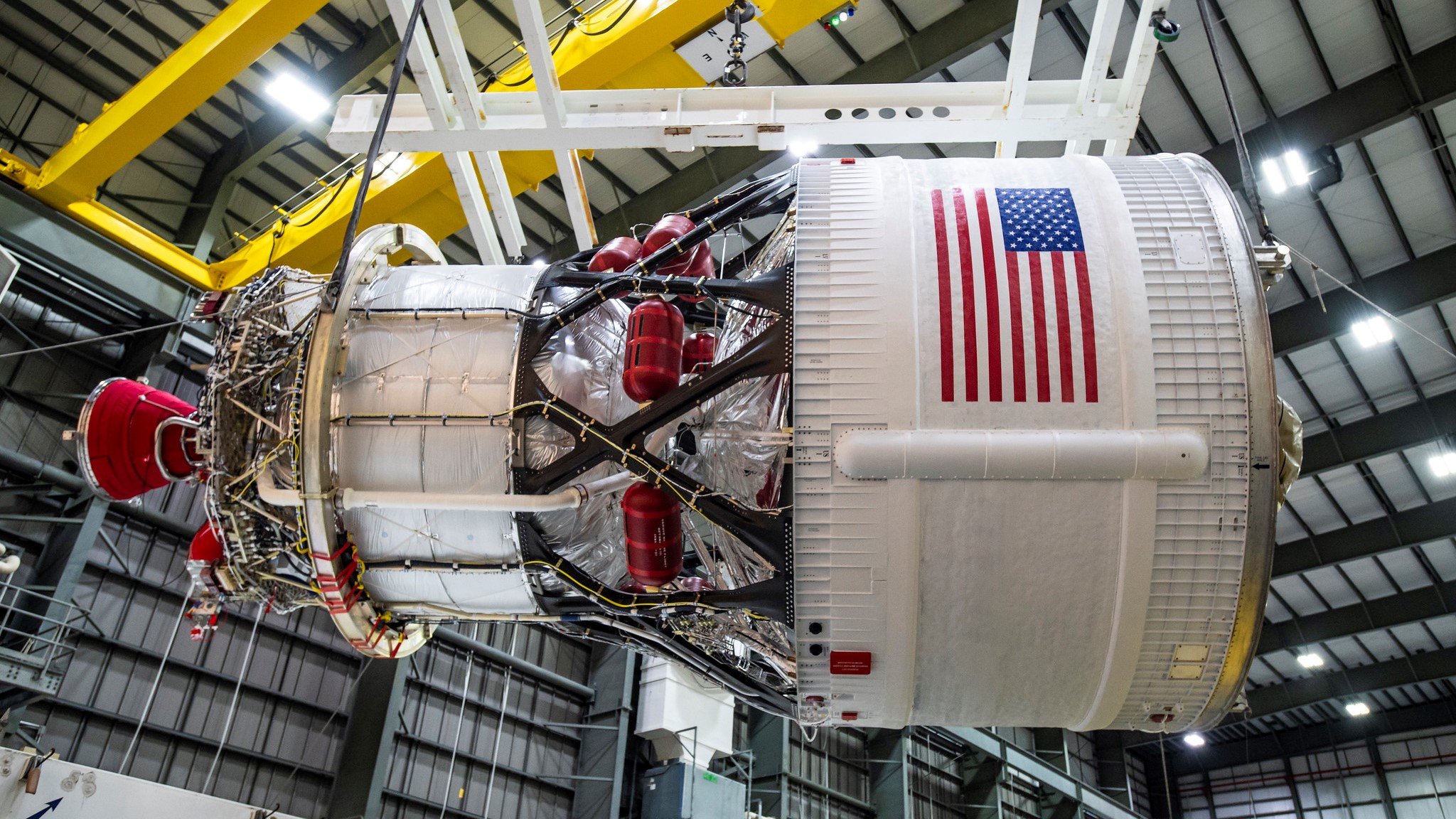Artemis 3 rocket hardware arrives in Florida for crewed moon mission
ICPS upper stage will provide the kick to send astronauts towards the moon when Artemis 3 launches.

A major component of a rocket to send astronauts to the moon has arrived in Florida.
The upper stage of NASA's Space Launch System (SLS) rocket scheduled to launch the Artemis 3 mission arrived at Cape Canaveral Space Force Station's Poseidon Wharf in Florida on Aug. 9, according to a NASA statement.
The SLS upper stage, known as the interim cryogenic propulsion stage (ICPS), will provide the extra kick needed to send astronauts to our nearest neighbor, the moon. The ICPS and its sole RL10 engine will burn cryogenic liquid hydrogen and liquid oxygen to send the crew inside the Artemis 3 Orion spacecraft from low Earth orbit into a precise trajectory towards the moon.
The Artemis 3 ICPS will be the last of its kind. Artemis missions 4 and on are to use the SLS Block 1B configuration which uses the more powerful Exploration Upper Stage (EUS).
Related: See Artemis 3 landing site at moon's south pole in new NASA photos
The ICPS was manufactured by United Launch Alliance (ULA) and departed facilities at Decatur, Alabama on Aug. 1. The ICPS was shipped by ULA's RocketShip cargo vessel, traveling down the Mississippi River, along the Gulf Coast and on towards Florida.
Check out ULA photos from the arrival of #ICPS-3, the upperstage that will propel #Artemis III astronauts to the Moon! 🌕📷: https://t.co/piSZuJD9jo pic.twitter.com/Qq1YivXbhnAugust 17, 2023
Contractors Boeing and ULA conduct final checkouts on the ICPS before it is delivered to NASA's nearby Kennedy Space Center.
Breaking space news, the latest updates on rocket launches, skywatching events and more!
Artemis 3 is scheduled to launch in 2025 for now, after an initial target of 2024. However, NASA recently expressed concerns about the progress of the mission's human landing system — SpaceX's Starship — and stated that the mission could slip into 2026.

Andrew is a freelance space journalist with a focus on reporting on China's rapidly growing space sector. He began writing for Space.com in 2019 and writes for SpaceNews, IEEE Spectrum, National Geographic, Sky & Telescope, New Scientist and others. Andrew first caught the space bug when, as a youngster, he saw Voyager images of other worlds in our solar system for the first time. Away from space, Andrew enjoys trail running in the forests of Finland. You can follow him on Twitter @AJ_FI.
